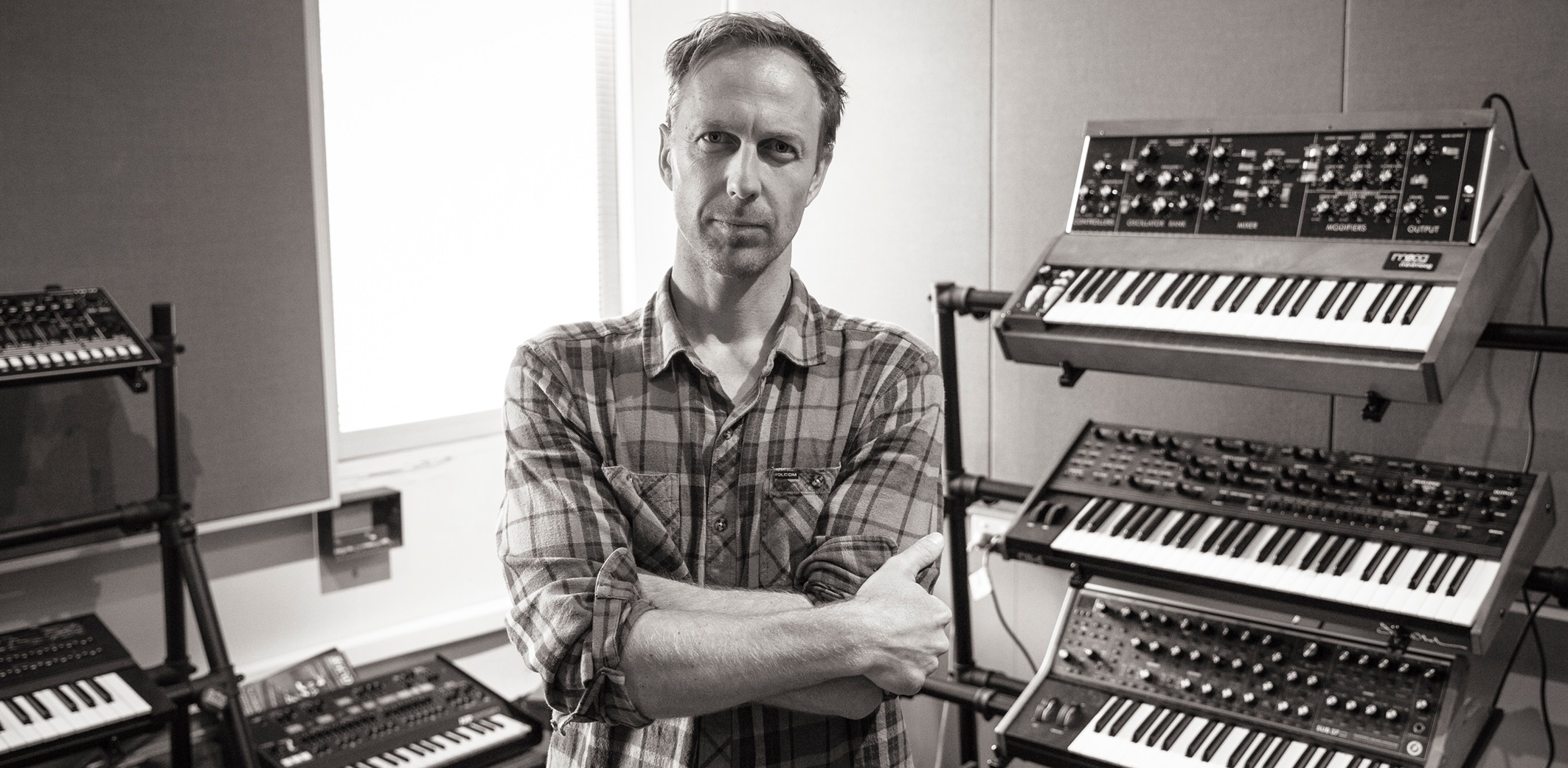The nature of the man’s work lends itself to all kinds of puns: the classically-trained musician incorporates a range of non-traditional instruments in his pieces, and is well known for his liberal use of children’s toys. As a result, you can make all kinds of cracks about his style being literal ‘child’s play’ and find yourself bang on the money.
More than that, such jibes aren’t only worth a cheap laugh, they also help illustrate the academically puerile contrast that exists in his work. A piece like Concerto for Piano And Toy Band, an upcoming composition Simmons is set to perform as part a linked string of shows united under the title The Usefulness Of Art, is both churlish and complex.
Simmons doesn’t see the highbrow and the lowbrow as being at all separate, and he has equal regards for both, finding himself obsessed with both the intellectual and the basic. He is neither a toffy and exclusive classical composer, nor is he some flash-in-the-pan peddler of jokes: his subversive pieces lie somewhere in between those two extremes.
“If you define highbrow as being highly cultured or intellectual, then yes, art music [tends to] aspire to be exactly that,” Simmons says. “But being highbrow does not mean it has to be unapproachable or only for the learned. I think The Simpsons is an excellent example of highbrow entertainment: it is accessible at any number of levels from slapstick through to obscure cultural references. Art for me is something to be shared, not guarded.”
Indeed, for Simmons, art has a uniquely communal power. His pieces, though obscure, are never difficult, and his performances are always guided by the goal of audience unity. They might include a range of novelty items, but his compositions are stridently moving, and never seek to undermine the intelligence of the audience. “I wonder whether I’m out of touch at times,” Simmons says, showing off a self-critical streak that an ample amount of critical and commercial success has proven to be misguided. “But then there are other times where I have managed to unite a crowd full of people and everyone is hugging like they are family. Art may change forms and mediums, but it remains vital in connecting and sharing experiences. I fear that those who claim art’s irrelevance are actually trying to stifle something that threatens traditional power structures.”
If that sounds a touch lofty, that’s because music is quite literally Simmons’ life’s work. His art isn’t some dalliance – it’s the fulfilment of something he has dreamed about for decades, and his obsession with aural experiments stretches all the way back, deep into his childhood. “Music was always there,” he says. “One of my earliest memories is staring up into the bell of my father’s soprano sax blaring away. I didn’t ever seriously think I would become a professional player. I thought I would be lucky if maybe I could become a music teacher, but more what I wanted to do was get into astrophysics, quantum physics or just pure maths and prove that 1 = 0. I now recognise that I enjoy exploring at the fringes.”
‘Exploring at the fringes’ could even be the name of a future Simmons composition. After all, he is a man happiest when he’s pushing at boundaries, stretching the very limits of good taste with work that never once conforms to expectations. That’s not to say he doesn’t have his worries and anxieties mind you – “I am concerned about the transformation of the arts into industry,” he says – but he is, above anything else, a man who has nothing but love for every element of his wild, freewheeling art.
There’s no wonder he is so prolific (he has at least two other performance pieces scheduled for later this year). After all, given how much he loves what he does, why would he ever stop? “My current position of understanding is that art is of fundamental importance for our humanity,” Simmons says, simply. “I love how toys bring listeners into sound worlds they would not usually be interested in.”
By Joseph Earp

